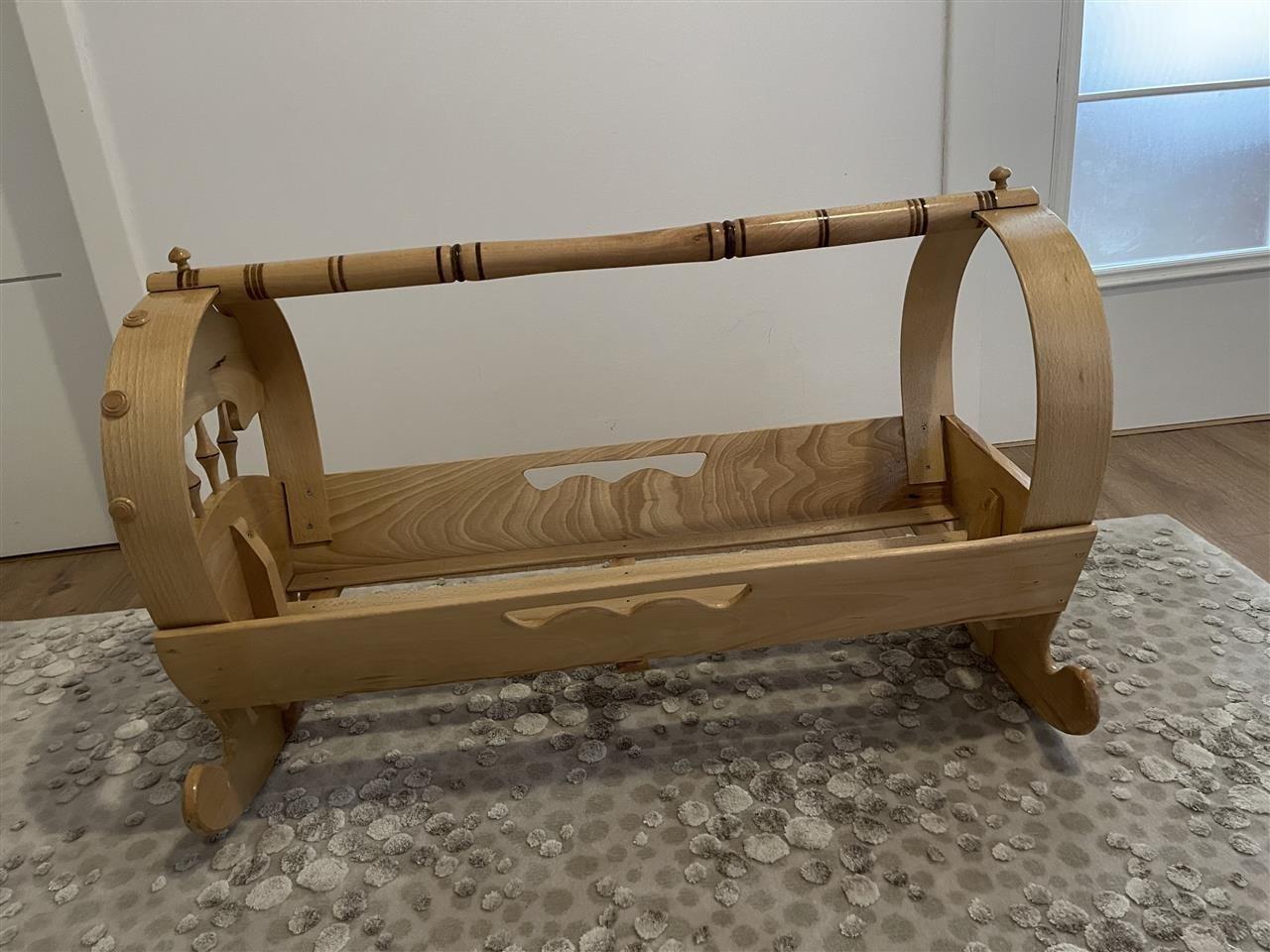Step into the enchanting world of Djepi Per Femije, where intricate designs and craftsmanship come together to create stunning pieces of art. These exquisite creations have a rich history and cultural significance that spans centuries. From the traditional techniques passed down through generations to modern adaptations that breathe new life into this timeless art form, Djepi Per Femije is truly a testament to the beauty of human creativity. Join us as we dive deep into the artistry behind Djepi Per Femije, exploring its origins, materials used, symbolism of colors and patterns, modern innovations, and tips on how to care for these treasured pieces. Get ready to be captivated by the mesmerizing world of Djepi Per Femije!
The History and Origins of Djepi Per Femije
The history and origins of Djepi Per Femije can be traced back to ancient times when skilled artisans began crafting these exquisite pieces for children. This traditional Albanian art form has deep roots in the culture and heritage of the region.
It is believed that Djepi Per Femije originated as a way to protect infants from evil spirits and bring them good luck. The intricate designs and patterns were not only aesthetically pleasing but also served as a powerful symbol of protection.
These beautifully handcrafted cradles were often made by skilled carpenters using locally sourced materials such as wood, fabric, and decorative elements like beads or embroidery. Each piece was meticulously crafted with love and care, ensuring both comfort and safety for the precious little ones.
Over time, Djepi Per Femije evolved to incorporate various regional influences, resulting in unique styles across different areas of Albania. From the vibrant colors used in southern regions to the more subdued tones found in northern parts, each design tells its own story reflecting local traditions and customs.
Today, Djepi Per Femije continues to be cherished not only as functional baby furniture but also as a symbol of cultural identity. Its rich history serves as a reminder of the craftsmanship skills passed down through generations, keeping alive an age-old tradition that celebrates both beauty and practicality.
Traditional Techniques and Materials Used in Making Djepi Per Femije
Crafting a Djepi Per Femije is no ordinary task. It requires skilled artisans who have mastered traditional techniques passed down through generations. These craftsmen employ their expertise to create intricate designs using a combination of materials that bring these beautiful pieces to life.
One of the key elements in making Djepi Per Femije is the use of natural fibers, such as wool or cotton. These materials not only provide durability but also add a soft touch to the overall design. Artisans carefully select high-quality fibers, ensuring that each piece will stand the test of time.
The process begins with spinning yarns from raw fibers, transforming them into strong threads ready for weaving. Traditional looms are then used to meticulously weave these threads together, forming patterns and motifs unique to each region and artisan.
To enhance the beauty of Djepi Per Femije, various decorative techniques are employed. Embroidery is commonly used to add intricate embellishments and details, showcasing the skill and artistry of the craftsman. Additionally, techniques like appliqué or patchwork may be incorporated to create visually stunning designs.
Natural dyes play a crucial role in bringing colors alive in Djepi Per Femije. Artisans often rely on plant-based dyes sourced locally or even homemade concoctions passed down within families. The vibrant hues derived from these natural sources give each piece its distinct character while also ensuring an eco-friendly production process.
Every step in creating a Djepi Per Femije involves meticulous attention to detail and honed craftsmanship skills. From selecting materials to executing complex weaving patterns, artisans pour their hearts into every stitch they make – resulting in truly remarkable works of art that capture both tradition and creativity.
Intricate Designs Craftsmanship
The Significance of Colors and Patterns in Djepi Per Femije
Colors and patterns play a vital role in the artistry of Djepi Per Femije. Each color and pattern chosen holds deep symbolism and meaning, making every design unique and significant.
In traditional Djepi Per Femije, vibrant colors are commonly used to represent joy, happiness, and celebration. Bright shades of red symbolize love and good fortune, while yellow embodies optimism and vitality. Green is often associated with growth, fertility, and prosperity. Blue represents tranquility and protection against evil spirits.
Patterns also hold great importance in Djepi Per Femije designs. Intricate geometric shapes are frequently seen, signifying unity within the community. Floral motifs symbolize nature’s beauty while animal prints are believed to bring strength and courage to the child wearing them.
These colors and patterns not only enhance the aesthetic appeal but also convey cultural identity through artistic expression. They connect generations by preserving traditions handed down from ancestors.
As modern adaptations emerge in Djepi Per Femije’s design, contemporary color combinations like pastels or monochromatic schemes add a fresh twist while maintaining respect for tradition. Innovative patterns may incorporate elements inspired by nature or even abstract designs that reflect individual creativity.
To fully appreciate these exquisite creations, it is essential to care for your Djepi Per Femije properly. Handwashing with mild detergent ensures longevity while protecting delicate materials such as silk or lace trimmings.
By understanding the significance of colors and patterns in Djepi Per Femije, we can truly appreciate the intricate craftsmanship behind each piece as a work of art that celebrates culture, heritage, joyfulness, and individuality!
Modern Adaptations and Innovations in Djepi Per Femije Design
As the world continues to evolve, so does the art of Djepi Per Femije design. While traditional techniques remain cherished, contemporary artists have infused their creativity into this ancient craft, resulting in modern adaptations that captivate both children and adults alike.
One notable innovation is the incorporation of new materials. In addition to the traditional wool and cotton fabrics, designers now utilize synthetic fibers that offer enhanced durability while retaining the softness required for a comfortable sleeping environment. These innovations allow for easier care and maintenance as well.
Another exciting development is the use of vibrant colors and bold patterns. While traditional designs often featured more muted tones, modern Djepi Per Femije showcases an explosion of hues ranging from pastels to neon shades. This infusion of color adds a playful touch and appeals to younger generations who appreciate bolder aesthetics.
Moreover, contemporary designers have ventured beyond the conventional rectangular shape associated with Djepi Per Femije. They explore various forms such as circular or asymmetrical designs, adding a unique twist to this timeless piece.
Furthermore, technological advancements have allowed for intricate embroidery and embellishments on Djepi Per Femije like never before. With computerized machines capable of creating complex patterns quickly and accurately, artisans can push boundaries by incorporating detailed motifs inspired by nature or storytelling elements.
Finally yet important is accessibility – modern adaptations ensure that Djepi Per Femije is available globally through online platforms where customers can browse different styles at their convenience without geographical limitations.
In conclusion (never conclude), these innovative approaches breathe new life into Djepi Per Femije’s design while still honoring its rich history (never summarize). By blending tradition with contemporary flair (never repetitive phrases), artists continue to expand possibilities within this fascinating art form.
How to Care for Your Djepi Per Femije
Taking proper care of your Djepi Per Femije is essential to ensure its longevity and preserve its intricate designs and craftsmanship. Here are some tips on how to maintain and care for your Djepi Per Femije:
1. Gentle Handwashing: Avoid machine washing or using harsh detergents that can damage the delicate fabric and colors. Instead, handwash your Djepi Per Femije in lukewarm water with a mild detergent specifically designed for delicate fabrics.
2. Drying: After washing, gently squeeze out excess water without wringing or twisting the fabric. Lay it flat on a clean towel or hang it up to air dry in a shaded area away from direct sunlight.
3. Storage: When not in use, store your Djepi Per Femije in a cool, dry place away from moisture and direct sunlight. Consider folding it neatly or rolling it up to prevent wrinkles.
4. Avoid Rough Surfaces: Be cautious when placing your Djepi Per Femije on rough surfaces as they can snag and damage the intricate embroidery or weave of the fabric.
5. Handle with Care: Treat your Djepi Per Femije with love and gentleness when handling it to avoid pulling threads or causing any accidental tears.
By following these simple steps, you can enjoy the beauty of your Djepi Per Femije for years to come while preserving its artistry and craftsmanship intact.
Remember, each piece tells a story and carries the rich cultural heritage of Albania within its stitches. So cherish this exquisite work of art by taking good care of your cherished Djepi Per Femije!


